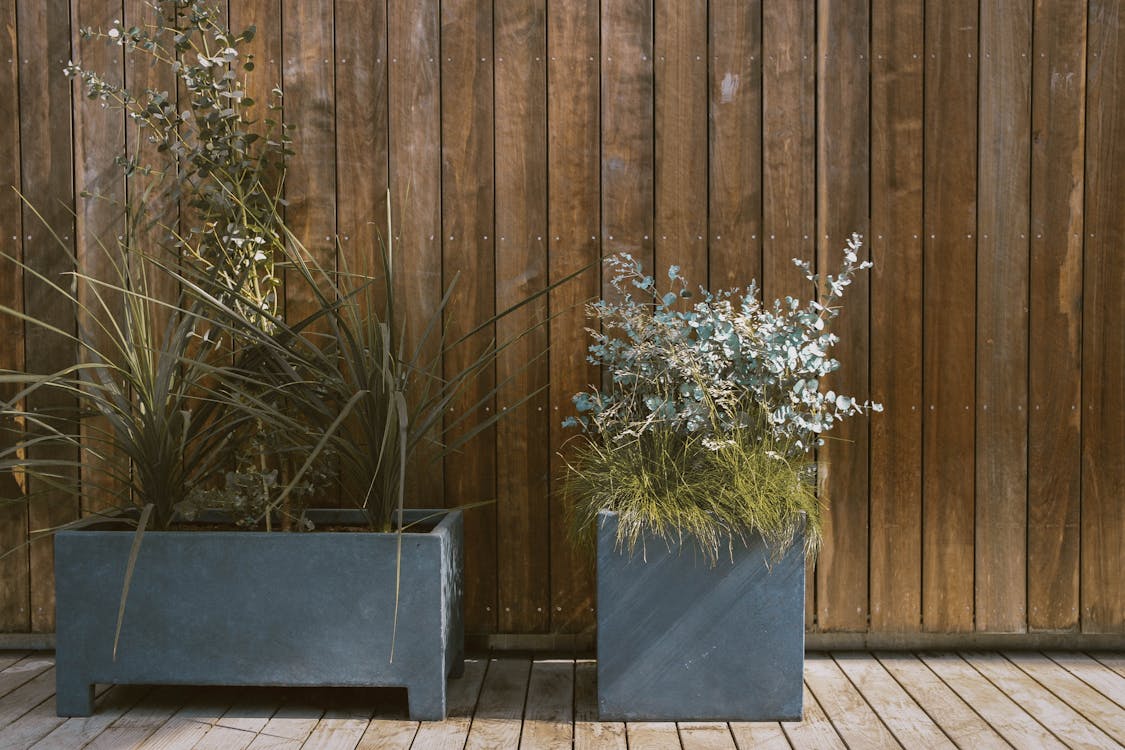The beauty of small-space gardening lies in the right choice of plant container, where even the tiniest balcony or corner can become a green oasis. With creative plant containers, you don’t need huge garden beds to grow your favorite greens; thus, they are ideal for urban living and compact homes. Let’s go through 10 innovative plant container ideas that mix practicality with charm to make every inch count.
1. Wall-Mounted Planters
Wall-mounted planters are a great option to make the most of your vertical space, especially if you have limited floor space. You can mount small pots in rows or go for a very sleek, modular design. Such containers are excellent for herbs, trailing plants, or succulents. To add a personal touch, paint or decorate the planters according to your taste.
2. Hanging Baskets
Hanging baskets are the classic, versatile options that can hang from a balcony or porch. This adds greenery at eye level, adding dimensions to the small space. Opt for lightweight containers made of materials such as woven rattan or plastic and fill those with cascading plants like ivy, ferns, or petunias.
3. Tiered Planters
Tiered planters are the best way to make the most of vertical space while adding a structured element to your garden. They very often come with stackable designs and allow different types of greenery to grow in one small space. They are excellent for small vegetable gardens, enabling each tier to provide for different crops such as lettuce, tomatoes, and peppers.
4. Repurposed Kitchenware
Breathe life into old kitchenware as plant containers. Various items like teapots, colanders, and even mixing bowls become really fun planters with very little effort. If necessary, drill some drainage holes in them and plant small things like herbs or succulents in them. It is also ecologically friendly to add playfulness to your garden with these.
5. Shoe Organizer Planters
A fabric shoe organizer can double as a vertical planter for small spaces. Just hang on a wall or fence, fill the pockets with soil, and plant your herbs or flowers. This creative solution is inexpensive, while assuring space efficiency in keeping your plants neat and off the ground.
6. Window Boxes
Window boxes are great for apartments and houses with small or no outdoors. Nail them securely underneath windows or along railings and display flowers, herbs, or trailing plants. Window boxes bring nature right to your home, and you are able to view the greenery from inside as well as outside.
7. Upcycled Wooden Crates
Wooden crates offer a rustic charm and are highly versatile as plant containers. Stack them to create a multi-level garden or place them individually in a corner. Line the crates with landscaping fabric to hold soil and prevent leakage. They’re great for growing larger plants like tomatoes or ornamental grasses.
8. Mason Jar Herb Garden
Mason jars are yet another fashion trend in small-space gardening, especially for herbs. Nail the jars onto a piece of wood or on a metal rack and hang on your kitchen wall for ease in cooking. Because these jars don’t have a bottom hole to accommodate draining, place pebbles on the bottom layer for non-water logging.
9. Recycled Plastic Bottles
Turn discarded plastic bottles into planters for a greener garden. Cut horizontally or vertically, whichever your design calls for, and attach to the wall or fence. These upcycled containers work well for herbs, flowers, or small vegetables and are very budget-friendly and eco-friendly.
10. Multi-Purpose Furniture Planters
Combine functionality with greenery by picking furniture that does double duty: it’s both a seat or surface and a pot. A bench with built-in planters, for example, or a side table with nooks for tiny pots can save your space while making it interesting, too. For balconies, patios, and small living rooms, these practical designs are brilliant.
Tips for Success in Small-Space Gardening
- Choose Compact Plants: Select varieties known to thrive with limited space – herbs, succulents, and dwarf veggies.
- Use Lightweight Soil: Opt for potting mixes designed for containers to avoid adding excessive weight to your planters.
- Maximize Vertical Space: Incorporate wall-mounted or hanging solutions to free up floor space.
- Add Drainage: Ensure all containers have adequate drainage to prevent root rot and overwatering.
Conclusion
The lack of big space is no restriction on becoming a great gardener. Try the following creative container ideas to build a lush nook even within the tiniest space: from recycling unusual items to modern and space-saving planters, let’s see different methods that will help in bringing nature right to your home. Start small. Let the art begin. Here comes your miniature garden!
